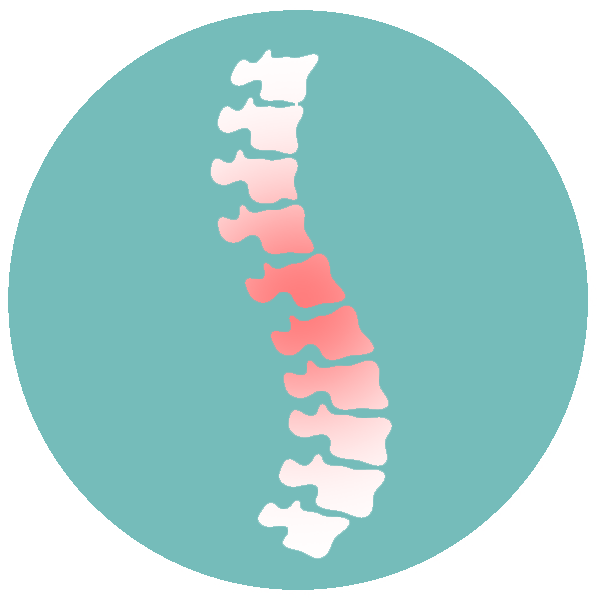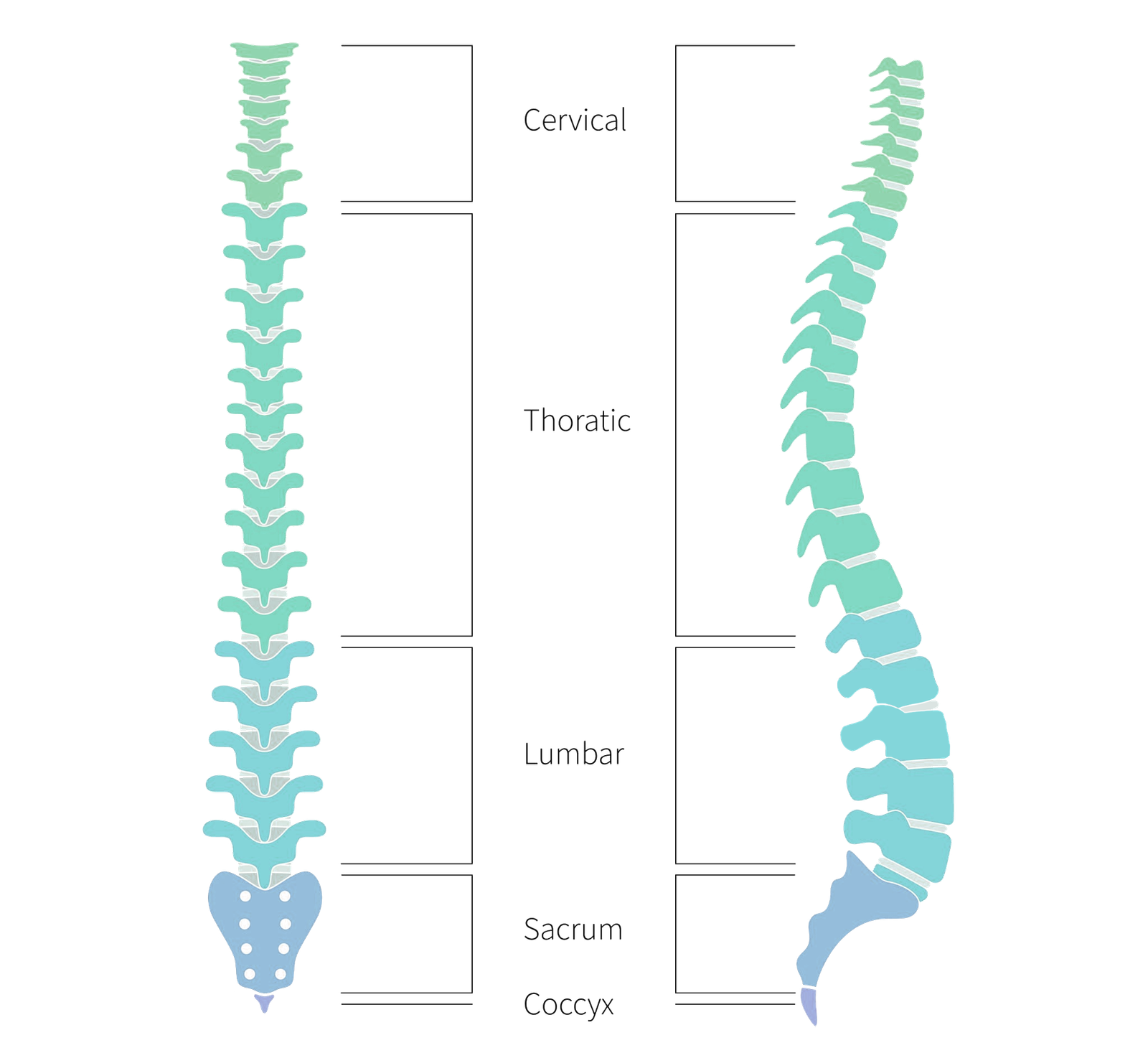Spine
Anatomy of a spine
The spine is a remarkable example of anatomical complexity and functional precision in the human body. Comprising an intricate assembly of bones, muscles, nerves, and joints, the spine is indispensable in our day-to-day functioning.


Structural Components:
Structurally, it consists of 33 individual vertebrae, systematically organized into five distinct regions: the cervical region (C1-C7) at the neck, the thoracic region (T1-T12) along the upper and mid-back, the lumbar region (L1-L5) in the lower back, the sacral region (S1-S5) near the pelvis, and the coccygeal vertebrae at the base.
Spinal Health:
Spinal health is integral to our overall functional capability and quality of life. Factors detrimental to spinal health include poor posture, sedentary habits, incorrect lifting techniques, and the natural process of aging.

Spinal Cord and Its Role:
The spine's three primary roles—protection, support, and flexibility—are pivotal to its function. It encases the spinal cord, shielding it from trauma. As a structural pillar, it supports the body's weight and provides a framework for muscle attachment and movement.
Functionality:
The stability and functionality of the spine are further enhanced by a network of robust ligaments and muscles, providing support and facilitating movement. Interspersed between the vertebrae are the intervertebral discs, pivotal in the spine's biomechanics.
